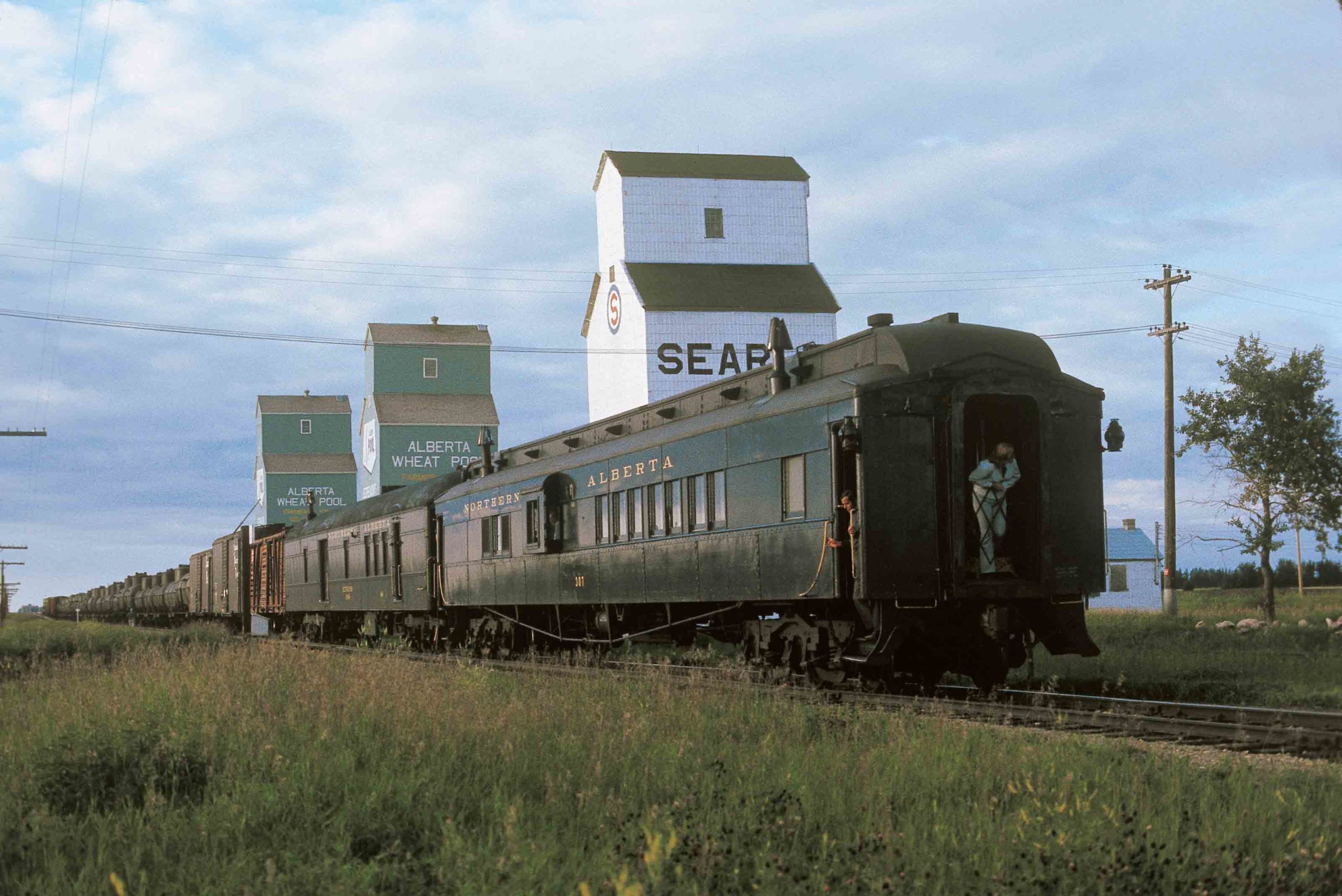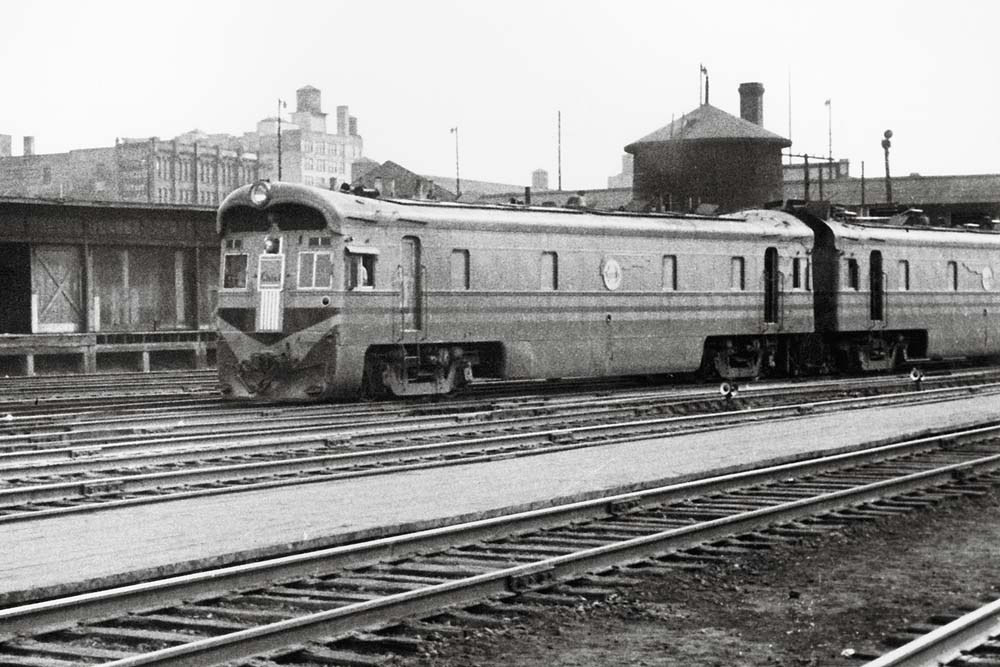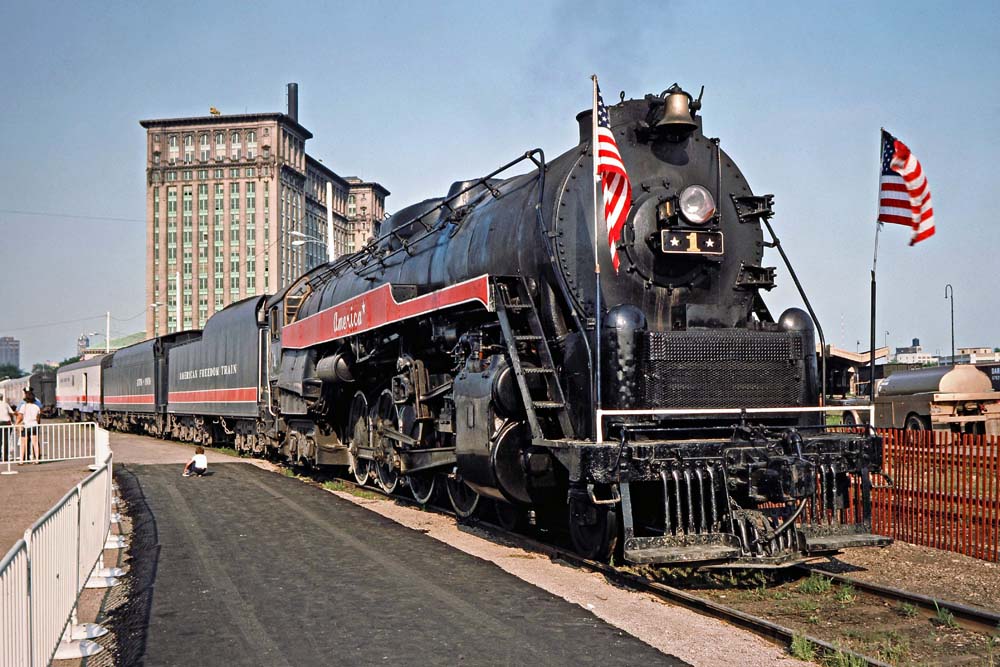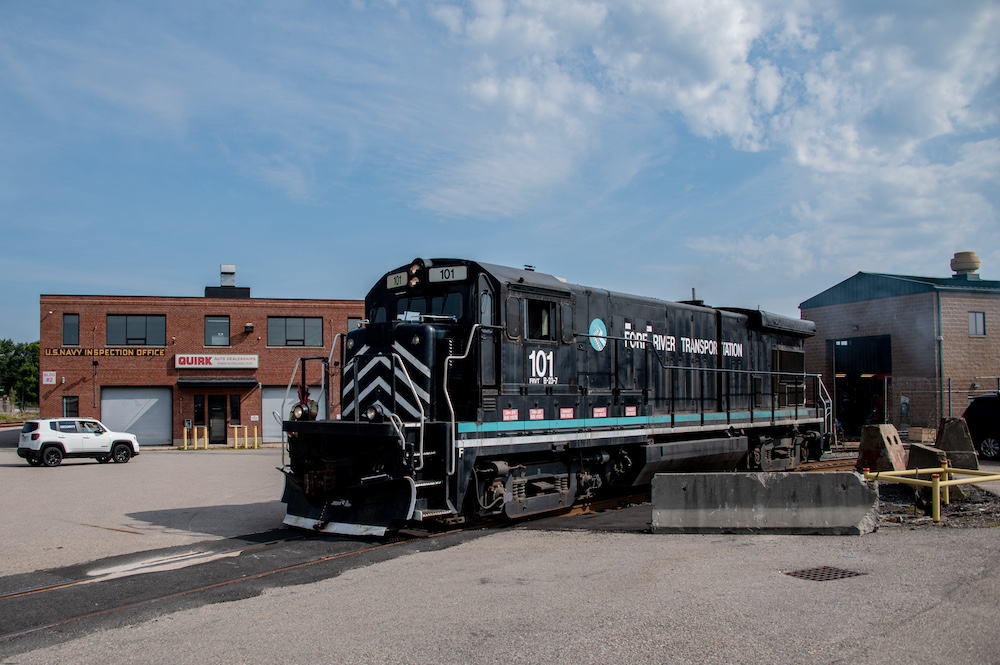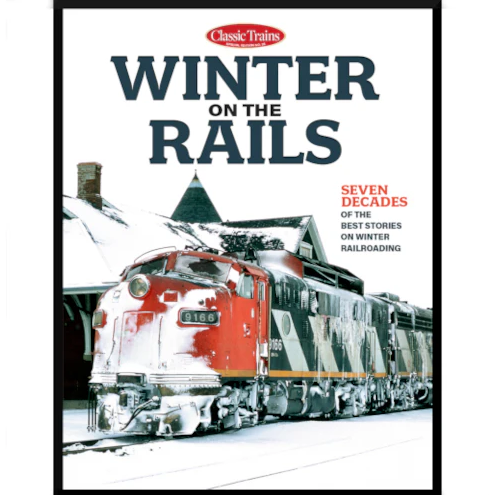This blue train comprised the passenger service of the Northern Alberta Railways. It ran as a blue train for 35 years, and has now been gone for 29, but there are people alive today who have never seen any other passenger train. These are people who have lived all their lives along the NAR lines north of Edmonton, without ever once having gone “outside.”
The story of NAR’s blue train goes back to 1912, when a Winnipeg, Manitoba, railway contractor named Jack McArthur began building lines for himself. The first was the Edmonton, Dunvegan & British Columbia, chartered to build to Prince George, B.C. There was also the Central Canada, which McArthur intended to link with portions of other lines in a railroad from Prince George to Winnipeg.
World War I and other factors killed this dream in 1920, when McArthur defaulted on bond interest and the Province of Alberta, as guarantor of his bonds, took over the lines.
The passenger equipment which the government inherited included a number of former Pennsylvania Railroad cars, some of which had been repainted in cream yellow—enough of them that the ED&BC became known as “the cream-colored railway.” There was also a Pullman-green business car.
It took the province nine years to get out of the railway business, and for part of that time, two of the McArthur roads were managed by the Canadian Pacific, with the result that CPR maroon was added to the rainbow. During this period another McArthur line, also being managed by the government, adopted green as its passenger-car color.
Then in 1927 the Alberta-owned railways acquired 10 coaches and 5 baggage cars from the Boston & Albany, 3 coaches from the Canadian National, 2 sleepers from the Milwaukee Road, and a dining car from the CPR. As if that did not provide enough variety, in 1928 Alberta sold to CPR another railway it had acquired, but retained a baggage-coach combine sporting a two-tone paint scheme.
In 1929 the lines remaining in government hands were merged into a new entity called Northern Alberta Railways, owned half-and-half by CPR and CNR. One of the first things NAR did was to order two new mail-express cars from Canadian Car & Foundry. As well, NAR bought a mail-express car and three 12&1 sleepers from CPR, and a coach from CNR.
The passenger fleet looked like what it was—a heterogeneous collection of miscellany. But management was rightly more concerned with welding five rag-tag railway companies into a working system than it was with paint schemes. For its first eight years, NAR was managed by the hard-nosed American railroader John A. Callaghan, who regarded uniform color as a frill.
This began to change on July 1, 1937, with the arrival of a new general manager, James M. MacArthur (no relation, of course, to Jack McArthur).
One of MacArthur’s first acts was to order a general sprucing-up of the system, but nothing could be done immediately about the colors of the passenger fleet, because of VIP visits. Just 19 days after MacArthur took office, the governor general of Canada, Lord Tweedsmuir, arrived for a trip up the line. The GG traveled in a federal-government car, but the rest of the train was a typical NAR mixture of liveries.
Then, only two months later, MacArthur had to play host for a tour by Sir Edward Beatty, president of Canadian Pacific and a much more critical guest than Tweedsmuir. Again, apart from Beatty’s business car, the tour train was a hodgepodge.
After Beatty’s visit, MacArthur had had enough, and ordered the repainting of all passenger equipment.
All the same color, he said. Olive green.
This was a bit surprising because olive green was CNR’s color and MacArthur had come from the CPR. It seems likely, however, that green was already the most prevalent color among NAR cars. This became moot, because before the green repainting program had been completed it was announced that during the summer of 1939, King George VI and Queen Elizabeth would visit Edmonton while touring North America in a train whose cars would be painted royal blue and trimmed in aluminum.
New orders came thick and fast. Start planning special trains to bring people from Grande Prairie and Hythe and Anzac and Dawson Creek into Edmonton so they could see a real, live king and queen. And repaint the entire passenger fleet.
All one color, MacArthur said. Royal blue, he said, so royalty buffs could travel to Edmonton in appropriate style.
No one could have predicted that NAR passenger cars would still be wearing royal blue when passenger service was withdrawn in 1974. But that’s what happened. (Mixed-train service survived on the NAR, with some combination coach-baggage cars having small bay windows added, which resulted in the nickname “comboose.”)
By 1981, when Canadian National bought out Canadian Pacific’s interest in the NAR, the blue cars were just a fading memory, although the memories are being kept alive by a display at the Alberta Railway Museum in Edmonton. But people who once traveled the north country by rail still talk affectionately about “the blue train.”
First published in Summer 2003 Classic Trains magazine
Learn more about railroad history by signing up for the Classic Trains e-mail newsletter. It’s a free monthly e-mail devoted to the golden years of railroading.





